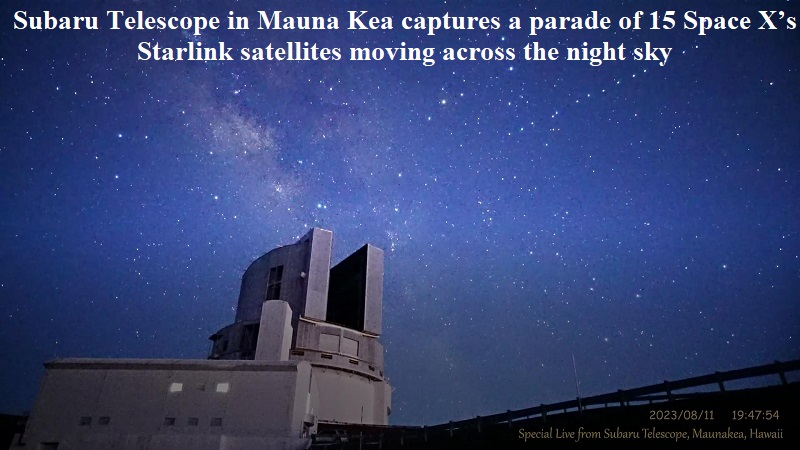
As the Perseid meteor shower reached its peak on August 12 and 13, people around the globe directed their gaze towards the night sky. During this celestial event, the Subaru Telescope located on Mauna Kea in Hawaii, United States, serendipitously captured a remarkable scene.
Coincidentally, while the Subaru Telescope was recording the Perseid meteor shower at its height, it also documented a procession of 15 dots traversing the nocturnal expanse. However, these were not the result of a natural occurrence or extraterrestrial vessels; rather, they were the Starlink satellites belonging to SpaceX.
The National Astronomical Observatory of Japan (NAOJ) uploaded the footage to YouTube on August 17, accompanied by the description, “A group of 15 satellites by SpaceX (STARLINK) passed the evening sky over Subaru Telescope, Maunakea, Hawaii, on Aug 12, 2023.”
The observatory further noted, “We did a special live streaming of the night sky over the Subaru Telescope at the peak days of the Perseid Meteor Shower. This was the view captured by the live stream by coincidence. They were fairly bright and impressive.”
The Subaru Telescope, a substantial optical infrared telescope and home to one of the world’s largest monolithic mirrors, is situated near Mauna Kea’s summit in Hawaii, as stated on the NAOJ’s website. The telescope’s robust light-gathering capacity enables it to capture faint celestial object illumination.
According to NASA, the Perseid meteor shower emerges when Earth intersects the debris path left by the comet 109P/Swift-Tuttle. This interaction causes particles from the comet’s remnants to collide with the atmosphere, producing luminous streaks across the sky.
During August 12 and 13, the Perseid meteor shower peaked, with these meteoroids, which complete a solar orbit every 133 years, hurtling through space at 60 kilometers per second from mid-July to the conclusion of August. People worldwide had the opportunity to observe the Perseid meteor shower either with the naked eye or through a telescope during this weekend.

Post Your Comments